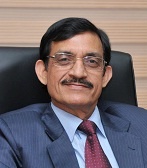Government sacks DRDO chief Chander, no reasons given
14 Jan 2015
The Narendra Modi government has sacked the Defence Research & Development Organisation (DRDO) chief, missile scientist Avinash Chander, who is also the scientific advisor to the defence minister.
 Chander was asked to go almost 16 months before his tenure, approved by the previous UPA regime, was to end.
Chander was asked to go almost 16 months before his tenure, approved by the previous UPA regime, was to end.
The move is seen as an attempt by the Modi government to usher in systemic reforms in DRDO, which has a vast empire of 52 labs, 7,800 scientists and over 530 R&D projects worth over Rs48,000 crore, but which also has a long history of failing to deliver cutting-edge weapon systems to the armed forces in time.
Chander had retired in November last year on turning 64 but, in keeping with the order passed by the UPA regime in May 2013, was scheduled to continue as DRDO chief till May 2016 on a contractual basis. But on Tuesday, an official notification said the appointments committee of the cabinet had "approved the termination of his contract" with effect from 31 January.
Chander himself was clueless. "I have not received any letter or order terminating my services so far. I cannot comment on the reasons but it's the government's prerogative. I joined DRDO in August 1972 and would consider the missile programme my biggest achievement," he told The Times of India on Tuesday evening.
Reports said DRDO's shoddy performance and unwillingness to reform, coupled with the growing greying profile of its scientists, was probably seen as an obstacle to the government's 'Make in India' policy. India is the world's largest arms importer, with its armed forces getting over 65 per cent of their requirements from abroad, which also makes it strategically vulnerable.
PM Modi himself had earlier asked DRDO to shed its "chalta hai" attitude, and become pro-active in delivering top-notch defence technologies in time. He had also asked DRDO to empower young scientists by making them heads of at least five labs to begin with.
Just a fortnight ago, defence minister Manohar Parrikar had promised "major changes" in DRDO within a couple of months. As a first step, the DRDO chief's financial powers have been delegated to "cluster heads" (vertical heads of aeronautics, missiles, electronics, life sciences, naval systems etc) for more flexibility.
Many critical DRDO projects, including the high-profile Tejas light combat aircraft, are running years behind schedule, with huge cost overruns. The strategic missile programme - personally overseen by Chander - is one area in which DRDO has managed to do well, with different nuclear-capable Prithvi and Agni missiles being inducted into the armed forces.
The Rama Rao Committee (RRC) had back in 2008 had held that DRDO should focus only on eight to ten "critical technologies'' of "strategic importance'', instead of making everything from dental implants and mosquito repellents to nuclear missiles and fighter jets.






























